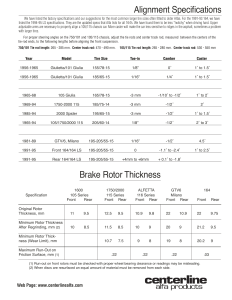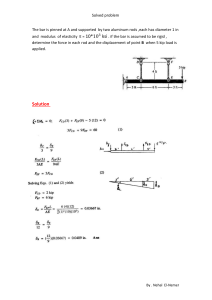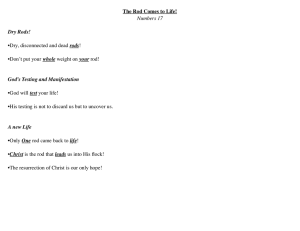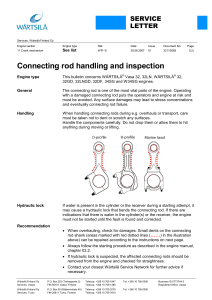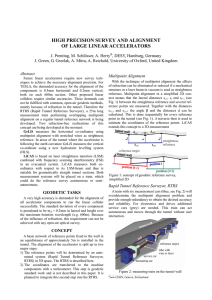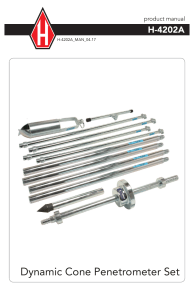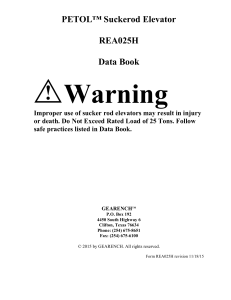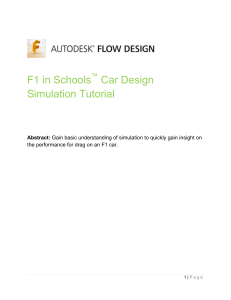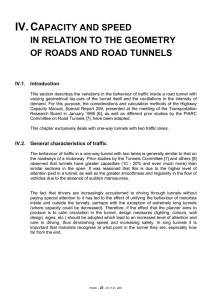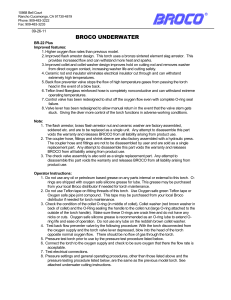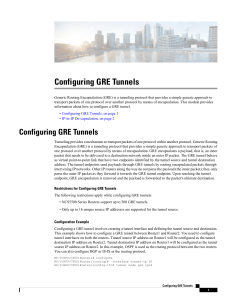English
Anuncio
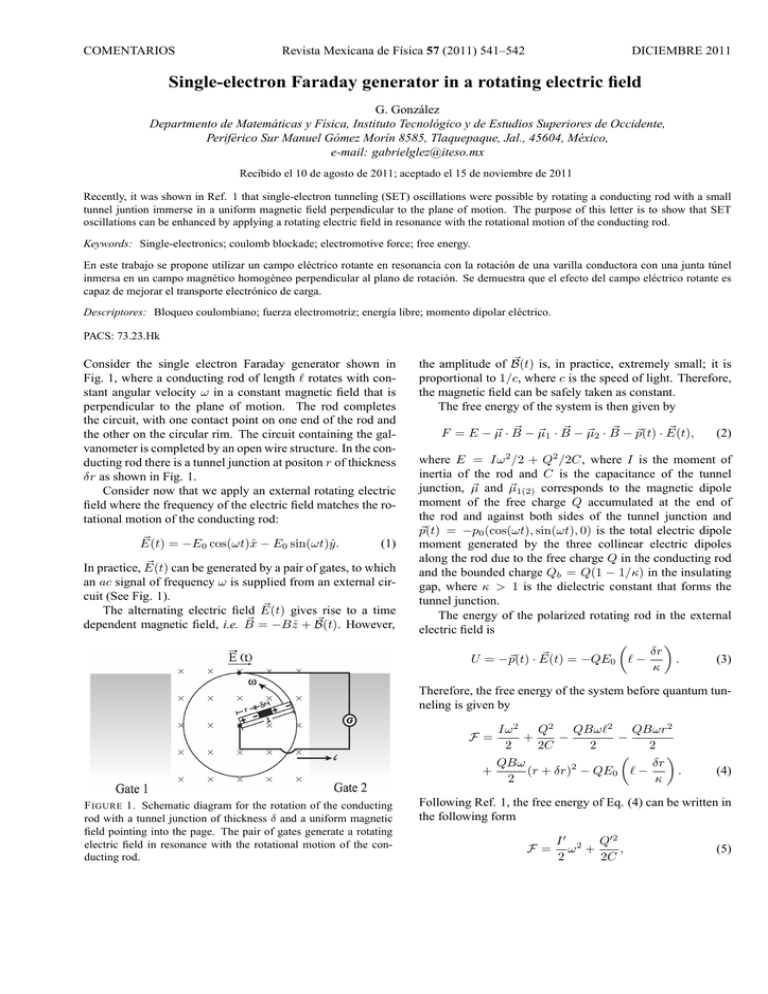
COMENTARIOS Revista Mexicana de Fı́sica 57 (2011) 541–542 DICIEMBRE 2011 Single-electron Faraday generator in a rotating electric field G. González Departmento de Matemáticas y Fı́sica, Instituto Tecnológico y de Estudios Superiores de Occidente, Periférico Sur Manuel Gómez Morı́n 8585, Tlaquepaque, Jal., 45604, México, e-mail: [email protected] Recibido el 10 de agosto de 2011; aceptado el 15 de noviembre de 2011 Recently, it was shown in Ref. 1 that single-electron tunneling (SET) oscillations were possible by rotating a conducting rod with a small tunnel juntion immerse in a uniform magnetic field perpendicular to the plane of motion. The purpose of this letter is to show that SET oscillations can be enhanced by applying a rotating electric field in resonance with the rotational motion of the conducting rod. Keywords: Single-electronics; coulomb blockade; electromotive force; free energy. En este trabajo se propone utilizar un campo eléctrico rotante en resonancia con la rotación de una varilla conductora con una junta túnel inmersa en un campo magnético homogéneo perpendicular al plano de rotación. Se demuestra que el efecto del campo eléctrico rotante es capaz de mejorar el transporte electrónico de carga. Descriptores: Bloqueo coulombiano; fuerza electromotriz; energı́a libre; momento dipolar eléctrico. PACS: 73.23.Hk Consider the single electron Faraday generator shown in Fig. 1, where a conducting rod of length ` rotates with constant angular velocity ω in a constant magnetic field that is perpendicular to the plane of motion. The rod completes the circuit, with one contact point on one end of the rod and the other on the circular rim. The circuit containing the galvanometer is completed by an open wire structure. In the conducting rod there is a tunnel junction at positon r of thickness δr as shown in Fig. 1. Consider now that we apply an external rotating electric field where the frequency of the electric field matches the rotational motion of the conducting rod: ~ E(t) = −E0 cos(ωt)x̂ − E0 sin(ωt)ŷ. (1) ~ can be generated by a pair of gates, to which In practice, E(t) an ac signal of frequency ω is supplied from an external circuit (See Fig. 1). ~ The alternating electric field E(t) gives rise to a time ~ ~ dependent magnetic field, i.e. B = −B ẑ + B(t). However, ~ the amplitude of B(t) is, in practice, extremely small; it is proportional to 1/c, where c is the speed of light. Therefore, the magnetic field can be safely taken as constant. The free energy of the system is then given by ~ −µ ~ −µ ~ − p~(t) · E(t), ~ F =E−µ ~ ·B ~1 · B ~2 · B (2) where E = Iω 2 /2 + Q2 /2C, where I is the moment of inertia of the rod and C is the capacitance of the tunnel junction, µ ~ and µ ~ 1(2) corresponds to the magnetic dipole moment of the free charge Q accumulated at the end of the rod and against both sides of the tunnel junction and p~(t) = −p0 (cos(ωt), sin(ωt), 0) is the total electric dipole moment generated by the three collinear electric dipoles along the rod due to the free charge Q in the conducting rod and the bounded charge Qb = Q(1 − 1/κ) in the insulating gap, where κ > 1 is the dielectric constant that forms the tunnel junction. The energy of the polarized rotating rod in the external electric field is µ ¶ δr ~ U = −~ p(t) · E(t) = −QE0 ` − . (3) κ Therefore, the free energy of the system before quantum tunneling is given by Q2 QBω`2 QBωr2 Iω 2 + − − 2 2C 2 2 µ ¶ QBω δr 2 + (r + δr) − QE0 ` − . 2 κ F= F IGURE 1. Schematic diagram for the rotation of the conducting rod with a tunnel junction of thickness δ and a uniform magnetic field pointing into the page. The pair of gates generate a rotating electric field in resonance with the rotational motion of the conducting rod. (4) Following Ref. 1, the free energy of Eq. (4) can be written in the following form F= I 0 2 Q02 ω + , 2 2C (5) 542 G. GONZÁLEZ where · µ ¶¸2 B`2 Bδr(2r+δr) E0 δr I = I−C − + `− (6) 2 2 ω κ · 2 µ ¶¸ δr B` Bδr(2r+δr) E0 0 Q = Q−Cω `− . − + 2 2 ω κ 0 When there is quantum tunneling there is a change in charge by ±|e| and an electromotive force E in the circuit which causes a change in the free energy given by F= I 0 2 (Q0 ± |e|)2 ω + + E|e|. 2 2C (7) The change in free energy is obtained by subtracting Eq. (7) from Eq. (5), which gives us µ ¶ |e|2 2Q0 ∆F = 1± + |e|E. (8) 2C |e| For the case when there is no tunnel junction one can easily verify that E = −Bω`2 /2 − E0 ` < 0. Since a tunnel event becomes energetically favorable when ∆F < 0, we conclude from Eq. (8) that a current i flows throughout the circuit when Q0 > (|e|/2) [1]. For the case when the tunnel junction lies exactly in the middle of the conducting rod, i.e. r = `/2 − δ/2 and r + δr = `/2 + δ/2, then a tunnel event becomes energetically favorable when µ ¶ |e| CωB`(` − δ) δ Q> + + CE0 ` − . (9) 2 2 κ Equation (9) can be expressed in terms of the electrostatic voltage in the following way 1. G. González, Rev. Mex. Fis 57 (2011) 232-235. Bω`2 |e| + E0 ` > V > 2 2C µ ¶ Bω`(` − δ) δ + + E0 ` − , 2 κ (10) where we have used the fact that the voltage remains bound from above by V = Bω`2 /2+E0 `. Eq. (10) gives us the following restriction (Bω` + E0 /κ)δ > |e|/C. The advantage of applying an external rotating electric field is that it relaxes the restriction condition obtained in Ref. 1. Using typical values of the tunnel junction capacitance C ≈ 3×10−15 F, dielectric constant κ = 10 and tunnel thickness δ = 10 Å [2], we need Bω` + E0 /κ > 5.3 × 104 V/m to satisfy the restriction condition, which is easily fullfilled for an electric field with amplitude E0 ∼ 106 V/m. This means that the length and angular frequency of rotation of the conducting rod can be reduced in order to experimentally realize this problem. In summary, we have shown how the effect of the singleelectron Faraday generator can be enhanced by applying an external rotating electric field with an angular frequency that matches the rotational motion of the conducting rod. We argue that using an external rotating electric field in resonance with the rotational motion of the conducting rod provides the necessary conditions for this problem to be accessed experimentally. Acknowledgments I would like to thank Luis López for useful discussions at the begining of this work. 2. Edited by H. Grabert and M. H. Devoret Single Charge Tunneling NATO ASI Series Vol. 294 (Plenum Press, New York, 1992), Chap. 2. Rev. Mex. Fis. 57 (2011) 541–542
